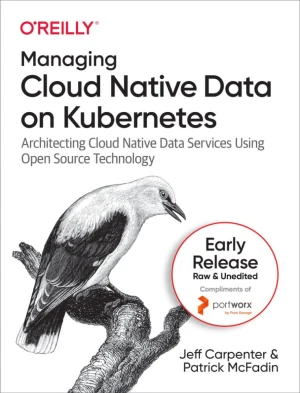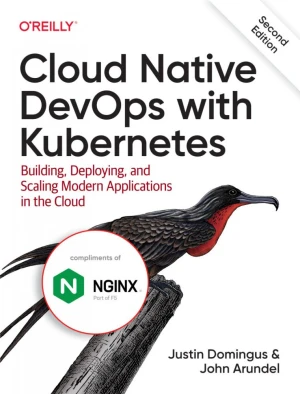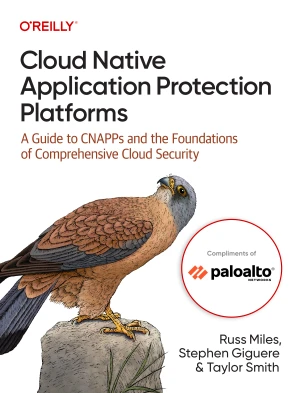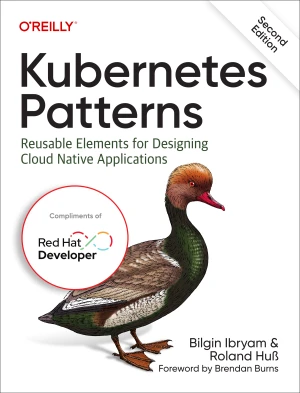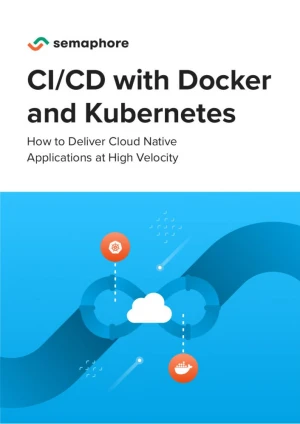Cloud Native Go
Building Reliable Services in Unreliable Environments
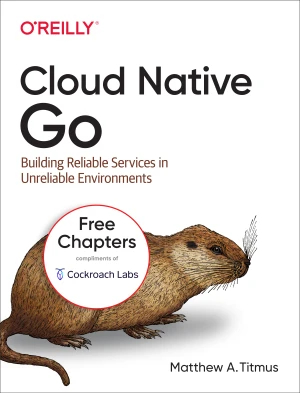

Book Details
| Author | Matthew A. Titmus |
| Publisher | O'Reilly Media |
| Published | 2021 |
| Edition | 1st (Free Chapters) |
| Paperback | 124 pages |
| Language | English |
| ISBN-13 | 9781492076322, 9781492076339 |
| ISBN-10 | 1492076325, 1492076333 |
| License | Compliments of Cockroach Labs |
Book Description
What do Docker, Kubernetes, and Prometheus have in common? All of these cloud native technologies are written in the Go programming language. This practical book shows you how to use Go's strengths to develop cloud native services that are scalable and resilient, even in an unpredictable environment. You'll explore the composition and construction of these applications, from lower-level features of Go to mid-level design patterns to high-level architectural considerations.
Each chapter builds on the lessons of the last, walking intermediate to advanced developers through Go to construct a simple but fully featured distributed key-value store. You'll learn best practices for adopting Go as your development language for solving cloud native management and deployment issues.
- Learn how cloud native applications differ from other software architectures
- Understand how Go can solve the challenges of designing scalable distributed services
- Leverage Go's lower-level features, such as channels and goroutines, to implement a reliable cloud native service
- Explore what "service reliability" is and what it has to do with cloud native
- Apply a variety of patterns, abstractions, and tooling to build and manage complex distributed systems
This book is published as open-access, which means it is freely available to read, download, and share without restrictions.
If you enjoyed the book and would like to support the author, you can purchase a printed copy (hardcover or paperback) from official retailers.
Download and Read Links
Share this Book
[localhost]# find . -name "*Similar_Books*"
Managing Cloud Native Data on Kubernetes
Is Kubernetes ready for stateful workloads? This open source system has become the primary platform for deploying and managing cloud native applications. But because it was originally designed for stateless workloads, working with data on Kubernetes has been challenging. If you want to avoid the inefficiencies and duplicative costs of having separa
Cloud Native DevOps with Kubernetes, 2nd Edition
Kubernetes has become the operating system of today's cloud native world, providing a reliable and scalable platform for running containerized workloads. In this friendly, pragmatic book, cloud experts Justin Domingus and John Arundel show you what Kubernetes can do-and what you can do with it. This updated second edition guides you through the gro
Migrating to Cloud-Native Application Architectures
Adoption of cloud-native application architectures is helping many organizations transform their IT into a force for true agility in the marketplace. This report defines the unique characteristics of cloud-native application architectures such as microservices and twelve-factor applications. Author Matt Stine also examines the cultural, organizatio
Cloud Native Application Protection Platforms
Cloud native security isn't a game for individual players. It requires team collaboration with a platform that can help cloud security engineers, developers, and operations people do their best work. That's what the cloud native application protection platform (CNAPP) delivers. With this practical guide, you'll learn how CNAPPs can help you consoli
Kubernetes Patterns, 2nd Edition
The way developers design, build, and run software has changed significantly with the evolution of microservices and containers. These modern architectures offer new distributed primitives that require a different set of practices than many developers, tech leads, and architects are accustomed to. With this focused guide, Bilgin Ibryam and Roland H
CI/CD with Docker and Kubernetes, 2nd Edition
Containers change how developers build, test, and deploy code. Adopting them takes time, and using them incorrectly can slow down the delivery process. Not every organization has a dedicated team of engineers to focus on this transition, unlike companies such as Spotify or Netflix. A startup CTO, for example, may need to prioritize shipping feature

